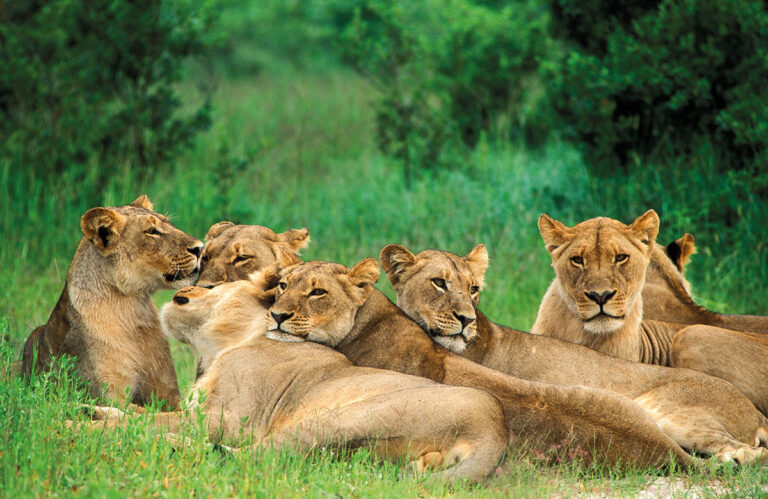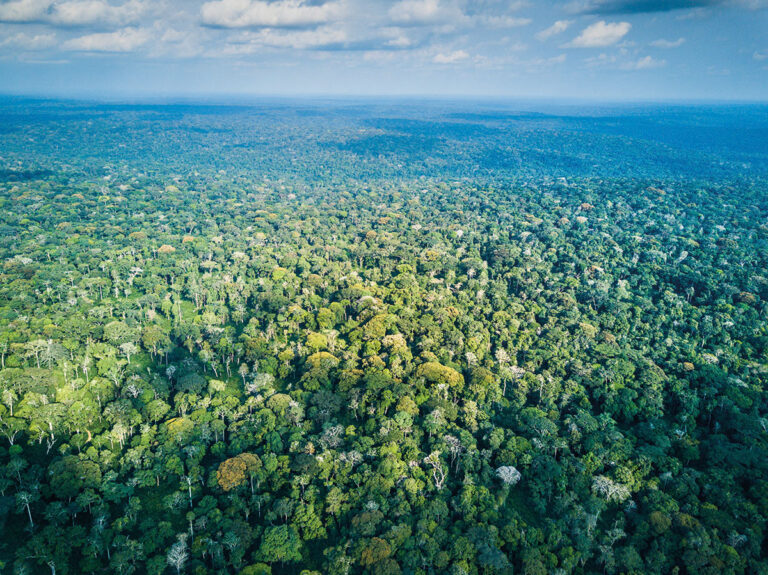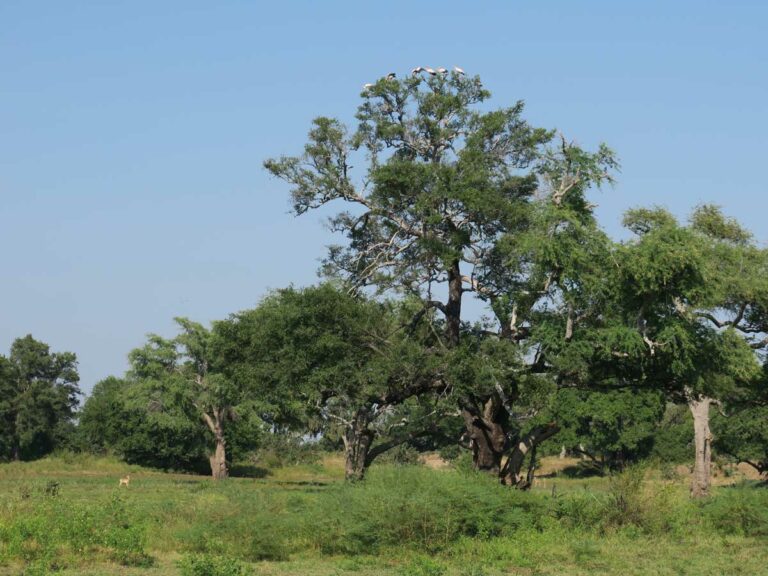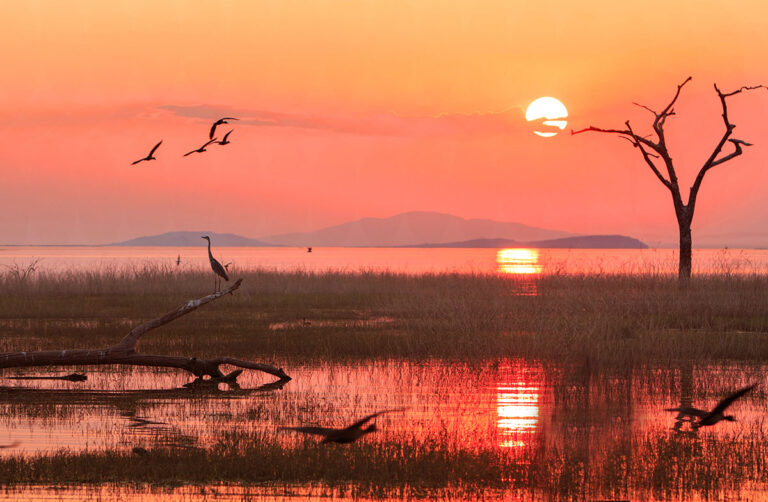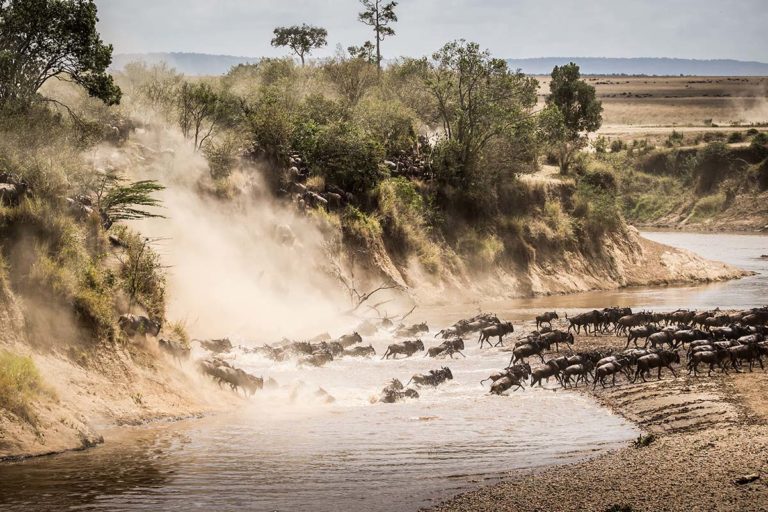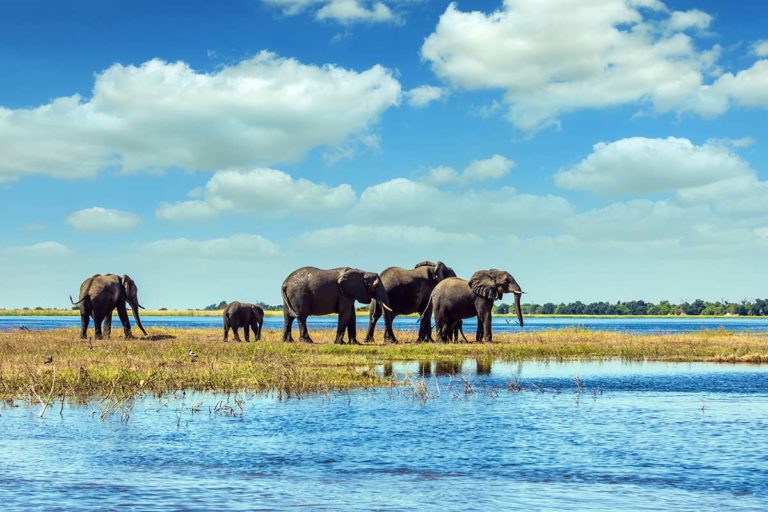Circuit breaks

At Travel Africa, we’ve long been fans of the slow safari, and it seems that more and more of us want to focus our future trips on taking time to relax, reconnect with nature and give ourselves a well-earned mental and physical break. Inevitably, this will mean including fewer places in our itineraries, minimising internal travel and allocating more days in each location.
Of course, this is easier said than done – when you’re investing in a long-haul holiday to a continent bulging with so many attractions and things to do, the temptation is to pack a load in.
The trick is to be clear on what you want to get out of your trip – is it simply to see wildlife, spend time on a beach, do certain activities or just lose yourself in the wilderness? – and then identify two or three places that will allow you to achieve that with the least possible time lost on travel. You’ll then need to be at peace with what you are omitting, knowing that wherever you are going will be truly special in its own way.
Perhaps Tanzania offers a greater conundrum than many countries, for it has an almost embarrassing abundance of riches. Sitting just below the equator on the Indian Ocean coastline and straddling the Great Rift Valley, its astonishingly varied landscapes include some famous big-hitters, such as the Serengeti, Ngorongoro, Kilimanjaro and Zanzibar. Yet its supporting cast are stars in their own right too – some may say even better – meaning wildlife lovers are seriously spoilt for choice.
Over the years a few distinct ‘circuits’ have developed, based on regional groupings of attractions. On one hand, this makes it easier. On the other, it can leave you pondering how to combine them, or which to sacrifice.
The type of traveller you are, and your budget, may influence your choice. Do you want to fly in and out of safari camps or have an edgier, more autonomous experience? Are you after assured wildlife sightings in more easily accessible parks, or will you take your chances in a remoter part of the country? Would you like a professional guide or are you happy to take care of yourself?
We hope this guide might help you map the possibilities and narrow down your options. As always, it’s worth speaking to a Tanzania travel specialist to help you finesse the details.
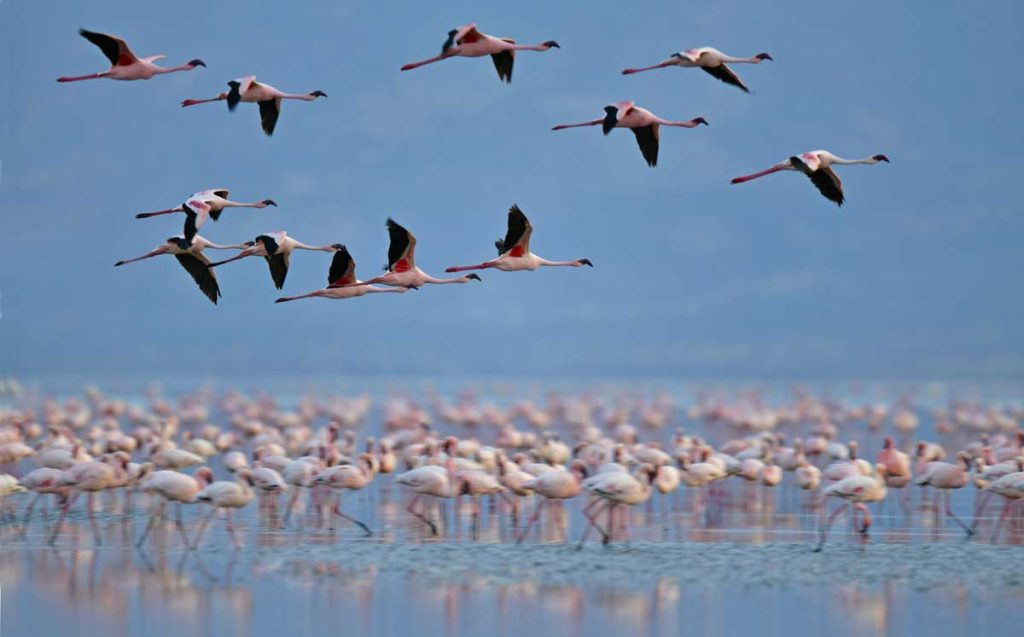
Northern Circuit: Wildlife Wonderland
Main attractions: Serengeti, Ngorongoro Crater, Kilimanjaro
Best for: Big Five, mountains, lakes
Access: Kilimanjaro International Airport; Arusha (domestic flights)
With its parks all within easy reach of Arusha, the Northern Circuit provides a popular introduction to safari. This circuit can become extremely busy at peak times, but careful planning can easily enable you to visit without the crowds.
John Addison of Wild Frontiers suggests travelling in an anti-clockwise direction: “Most people do the Northern Circuit clockwise. Doing it the other way allows easier gate entries and less congestion. There is so much to offer… it’s not just savannah or Rift Valley lakes. The people are some of the nicest you will ever meet.”
First up, there’s the Serengeti, famous for hosting the annual movement of two million animals. Even without the migration, the volume of predator-ungulate match-ups makes for unforgettable game-viewing.
The show-stopping Ngorongoro Crater, the largest intact volcanic caldera in the world, houses Africa’s densest lion and hyena populations, some impressive tuskers and the endangered black rhino.
The baobab-rich Tarangire National Park provides the only reliable source of water in the area, attracting great herds of elephant, zebra and other grazers.
Manyara National Park, though small, is rich in diversity – with its lake, groundwater forest, acacia woodland, rocky cliffs, hot springs, grassy floodplain and reliable wildlife sightings, including tree-climbing lions.
There’s also the lesser-known Mkomazi National Park, which boasts the Big Five, lower park fees than its more famous peers and considerably less traffic; and the smaller but equally enthralling Arusha National Park, with its diverse habitats and lakes – an ideal place to start your Tanzanian journey.
“Arusha National Park and Mt Meru [which lies within the park] are two top must-sees,” says Jonathan Lubbe of Hatari Lodge. “The slopes and spans of the ‘Great Mountain’ and lush green setting of the park have so much to offer in terms of ecological and topographical diversity, and they host an array of wildlife.”
Tanzania ripples with mountains, none more so than the famous Kilimanjaro. At 5895m, ‘Kili’ is the highest free-standing mountain in the world, rising spectacularly from the dusty Maasai Steppe. There are several trekking options to the summit, ranging from five to nine days.
The 4562m-high Mt Meru faces Kilimanjaro across a wide sweep of plain. Geologists believe Meru was once taller than Kili, but an explosion 250 million years ago blew off its top and eastern flank, creating a west face with a clean slope and a deep, gaping crater.
Another climbing option is Ol Doinyo Lengai. The ‘Mountain of God’ offers a moonlight trek to escape the worst of the heat. This is not for the faint-hearted, though – the mountain is sheer-sided – but it’s worth it for the astonishing views from the top at sunrise when, on a clear day, you’ll see the summits of Kilimanjaro and Meru pierce the dawn.
Tanzania is dotted with lakes, from small and seasonal to huge inland seas. Lake Victoria is the second-largest on the planet and littered with archipelagos. Rubondo Island – a lush, relatively untouched forest landscape – is home to many species, such as elephant, giraffe and chimpanzee.
Lake Eyasi, a salt lake at the base of the Great Rift Valley, attracts an impressive array of birdlife – flamingos, pelicans, storks and lovebirds, among others. The area is home to several tribes, including the Hadzabe, the last hunter-gatherers in East Africa.
Lake Natron’s high mineral concentration sustains a fascinating ecosystem. During breeding season, the area welcomes over two million lesser flamingos – about three-quarters of the total world population. A view of the smoking Ol Doinyo Lengai makes the ethereal beauty of the lake even more dramatic.
Northern Circuit Sample Itinerary
10 days, from US$3760 (£2720) per person, including game activities, park and camp fees, meals, drinks and transfers
Days 1-2: Depart Arusha for Tarangire NP. Stay at Maramboi Tented Camp for two nights.
Days 3-4: Drive to Lake Natron. Two nights at Lake Natron Camp. Explore the area, including lake, waterfall and cultural interaction. Option to climb Ol Doinyo Lengai (additional day needed).
Days 5-7: Drive to northern Serengeti. Based at Serengeti Wilderness Camp for three nights.
Days 8-9: Transfer to Ngorongoro, with ptional Olduvai Gorge visit en route. Two nights at Ngorongoro Sopa Lodge.
Day 10: Drive back to Arusha.
Itinerary courtesy of Wild Frontiers www.wildfrontiers.com
Top tip
Before rushing off to the parks, take time to adjust to your new surroundings with a couple of nights in Arusha. Hamerkop House on the Kiligolf private wildlife estate was specifically designed with post-Covid travel in mind.
James Haigh, Lemala Camps
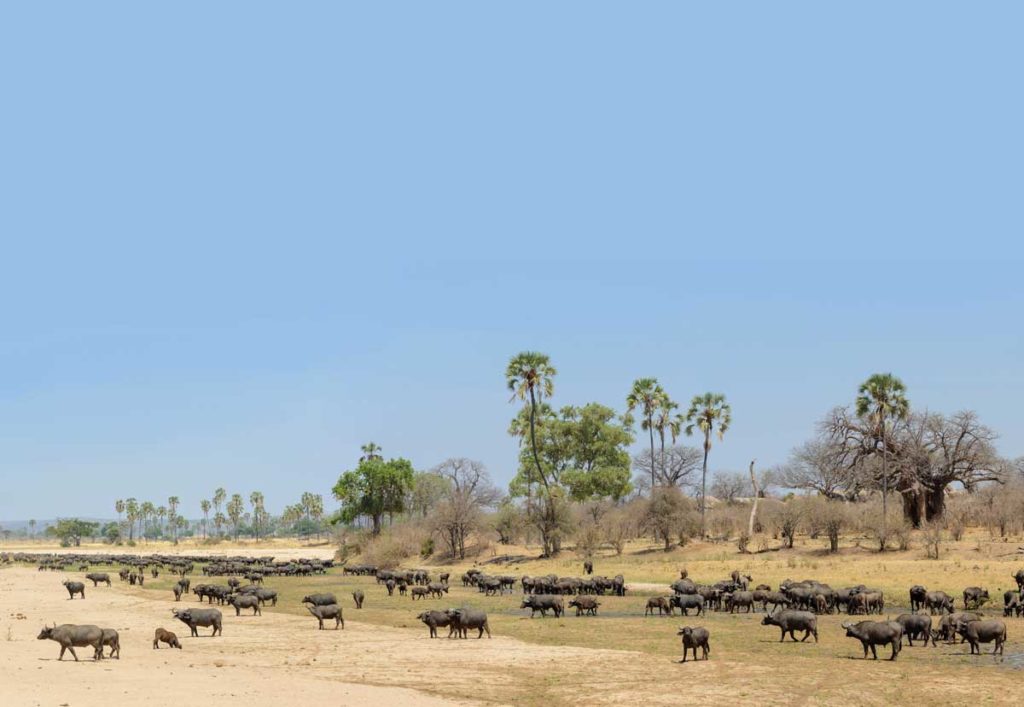
Southern Circuit: For Serious Safari-Goers
Main attractions: Nyerere (Selous), Ruaha, Udzungwa
Best for: Remote adventure, fly camping, wild dogs
Access: Julius Nyerere International Airport, Dar es Salaam; then light aircraft or self-drive to the parks
While less well-known and not as easily accessible as their northern cousins, the Southern Circuit parks are much wilder and far less crowded – but equally rewarding.
“The Southern Circuit is blessed with fabulous wildlife and landscapes and made all the better by its relative obscurity, meaning game-viewing can be at your own pace, unpressured by other vehicles,” says Jane Fox of Foxes Safari Camps.
Once 55,000 sq km of wilderness, the Tanzanian government recently split the Selous Game Reserve in two, as part of its intention to widen the protected area of the park and to build a hydropower dam on the Rufiji River. The northern sector, now known as Nyerere National Park – at 30,000 sq km, still Africa’s largest – is itself sliced by the Rufiji. Home to a diverse range of wildlife, including the world’s largest population of wild dog, Nyerere is one of the best places for an exhilarating fly camping experience. Drifting along the Rufiji is another must-do.
The under-visited Ruaha National Park is a vast, sprawling space where views are long and lean, unfettered by much except distant hills, which carve soft curves into the horizon, and baobabs, which punctuate sharp profiles against the evening light. Enjoy it for vast views, loads of space and huge elephants.
Mikumi National Park, which sits atop Nyerere, boasts an abundance of elephant, wildebeest, zebra and buffalo. You can often see animals grazing along the side of the highway that runs along its border.
A hikers’ dream, Udzungwa Mountains National Park houses a dozen large forest-swathed mountains, rising from the flat coastal scrub. Dubbed the ‘African Galapagos’, it’s a treasure chest of endemic plants and animals, such as the African violet, the Iringa red colobus monkey and the forest partridge.
Southern Circuit Sample Itinerary
15 days, from US$6794 (£4911) per person including game drives, park entry fees, accommodation, internal flights and transfers
Days 1-3: Fly from Dar es Salaam to Nyerere NP. Spend three nights at Rufiji River Camp, enjoying game drives, boat trips and walking safaris.
Days 4-7: Fly to the southern highlands. Stay for four nights at Mufindi Highland Lodge. Hike the mountains, forests and tea plantations; go horse-riding, fishing, canoeing and more. Visit Igoda Children’s Village.
Days 8-11: Fly to Ruaha NP. Stay at Ruaha River Lodge for four nights. Activities include half-day and full-day game drives, or simply view wildlife from your verandah.
Days 12-14: Fly to the Swahili Coast, where you will take a boat to the private Lazy Lagoon Island. Relax, swim, explore on foot or kayak around the mangroves. Optional excursion to Bagamoyo.
Days 15: Transfer back to Dar es Salaam.
Itinerary courtesy of Foxes Safari Camps www.foxessafaricamps.com
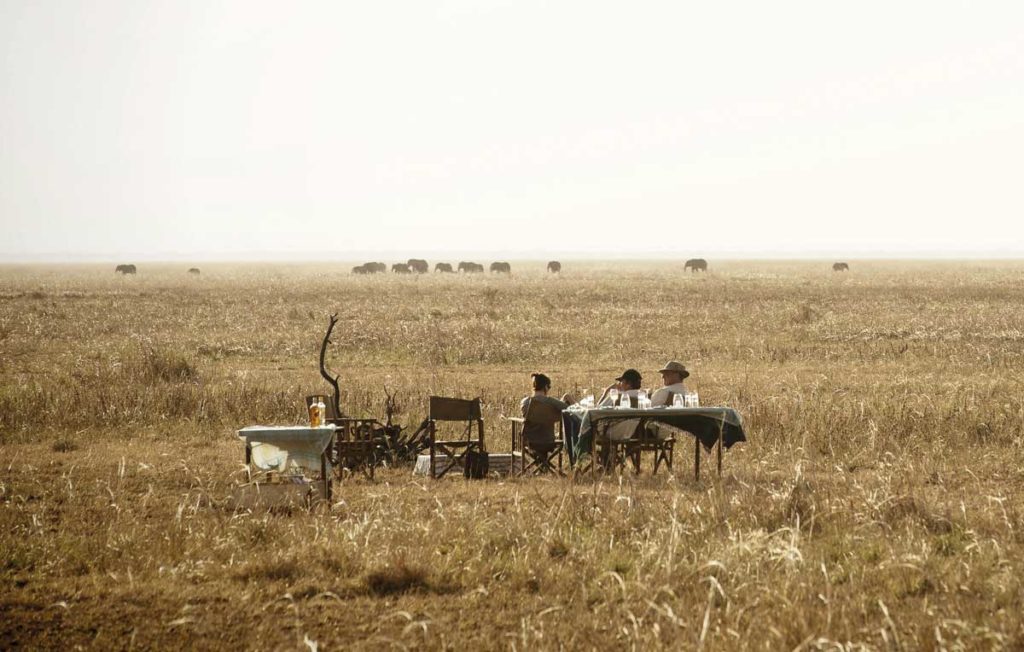
Western Circuit: Remote and Raw
Main attractions: Katavi, Lake Tanganyika, Mahale
Best for: Wild lands, chimpanzees, diving
Access: Kilimanjaro International Airport; Julius Nyerere International Airport, Dar es Salaam; Arusha (domestic flights); charter flight or boat from Kigoma
The Western Circuit is often overlooked because of its remoteness, which is a shame as it includes some big-hitting experiences for those looking for the ultimate adventure.
“While it is harder to reach this remote part of Tanzania, the reward is the pure wilderness that you have all to yourself,” says Ted Archdale of Tanzania Odyssey. “And, at certain times of the year, the wildlife concentrations in Katavi can be higher than the Serengeti.
“The pristine white sand on the shores of Lake Tanganyika give you a ‘beach’ experience while being on safari. Chimp trek in the morning, then relax in the evening watching the sun set on the second-largest [by volume] freshwater lake in the world.”
Katavi National Park’s isolation means it receives around the same number of visitors in a year that the Ngorongoro Crater does in a day. Primarily brachystegia woodland, it hosts large populations of eland, sable and roan antelope. However, it is the park’s waterways that offer the most exciting game: huge hippo pods congregate in argumentative mud wallows and enormous crocodiles dig caves in riverbanks as the water subsides. Gargantuan herds of elephant, buffalo and plains game, which offer a feast for dozens of prides of lion, amplify Katavi’s size. More than 400 species of bird also call it home.
The world’s longest freshwater lake (and second deepest), Lake Tanganyika borders Tanzania, the Democratic Republic of Congo, Zambia and Burundi. Here, sandy beaches disappear into shadowy forest before growing into dramatic escarpments that rise up to 2000m. Over 250 species of rainbow-coloured cichlids live within its waters, as do unique species of jellyfish, terrapin, crocodiles and hippos – making for superb snorkelling and diving. There’s also kayaking, dhow trips, motorboat safaris and fishing to enjoy.
The steep, forested slopes of Mahale Mountains National Park are home to around 800 of Africa’s chimpanzees, as well as red colobus, red-tailed and blue monkeys. Tracking these primates on foot is one of those trip-of-a-lifetime moments. Only accessible by boat, the tiny Gombe Stream National Park (just 35 sq km), on the hills of Lake Tanganyika’s eastern shore, hosts the renowned chimp reserve of Jane Goodall fame.
Western Circuit Sample Itinerary
9 days, US$8128 (£5875) per person, including all game activities, meals, drinks, internal flights and transfers
Day 1: Arrive at Kilimanjaro airport and transfer to Rivertrees, Arusha. Relax in the lush coffee-growing region in the shadow of Kilimanjaro and Mt Meru.
Days 2-4: Fly to Katavi for three nights at Chada Camp. Activities include game drives, walking safaris and fly camping.
Days 5-8: Charter flight to Mahale, then boat transfer to Greystoke for four nights. The camp offers chimpanzee trekking, nature walks, fishing and swimming in the lake.
Day 9: Transfer to Kilimanjaro for flight home.
Itinerary courtesy of Tanzania Odyssey www.tanzaniaodyssey.com
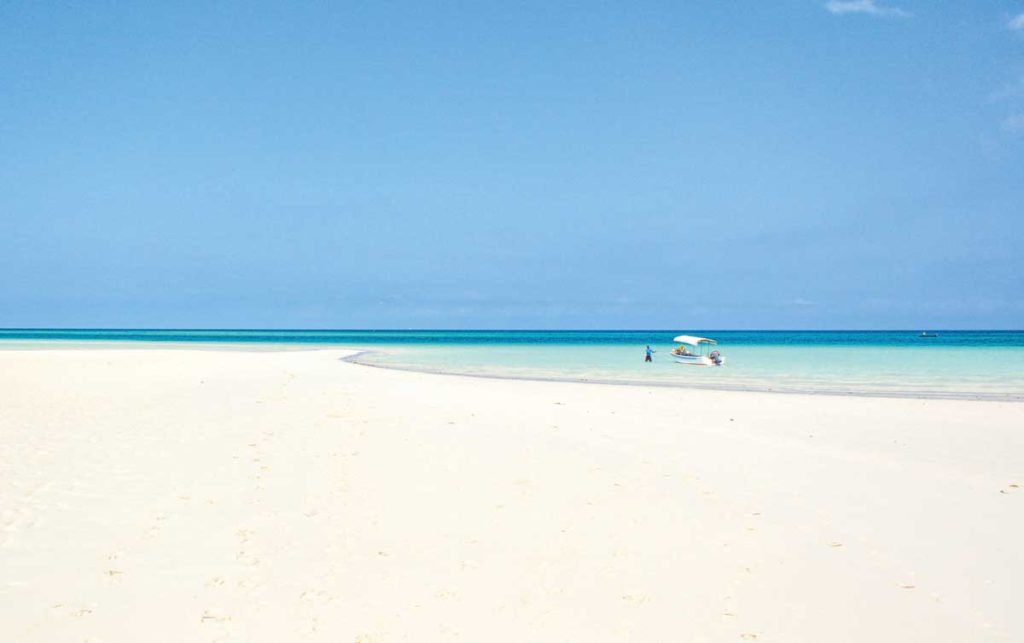
Eastern Coastal Circuit: Sun and Sand
Main attractions: Zanzibar, Saadani, Usambara
Best for: Beaches, history and culture, relaxation
Access: Julius Nyerere International Airport, Dar es Salaam; Zanzibar International Airport
Combining a beach holiday with a safari is one of the best ways to experience Tanzania. After the heat, dust and excitement of your safari, reclining on isolated, white sand beaches renders time to relax. Yet, the east of Tanzania has enough attractions to warrant a circuit on its own.
“The Eastern Circuit rewards you with insights and experiences that you will not find anywhere else,” says Johannes Soeder of Akwaba Travel. “It hosts some of the greatest archaeological sites on the Indian Ocean, as well as the chance to mix history with wildlife, hiking and the beach. The further south you go along the coast, the stronger you will feel the influence of heritage and tradition.”
Zanzibar, Mafia and Pemba – Tanzania’s spice islands – are the jewels of the Indian Ocean and each offers something a little different. Zanzibar beats to a quicker, noisier tempo than the others; it is packed with Swahili culture and powdery white beaches. On the less-visited Mafia, where you can dive with sharks, and Pemba, with its excellent diving, you will have the beaches almost to yourself.
South of Dar es Salaam, you can explore the ancient trading posts of Kilwa Kisiwani and Mikindani. The starting point of Dr David Livingstone’s final African expedition, Mikindani was the regional capital of German East Africa, and a huge fort – now a hotel – stands sentinel over the town. The ruins at Kilwa Kisiwani include the coral-tiled Great Mosque, dating from the 11th century. North of Dar, Bagamoyo offers further insight to ancient trade and slave routes.
Saadani National Park is the only wildlife conservancy in East Africa to boast an ocean front. Walking on the beach at sunrise looking for animals, is an undoubted highlight. Just north of the park, you’ll find plenty of unspoilt, empty beaches around Pangani.
For an escape from the heat, the Usambara Mountains offer superb hiking around passes, caves, waterfalls, forests and villages.
Eastern Coastal Circuit Sample Itinerary
12 days, €3200 (US$3760, £2705) per person, including car rental (through Tanzania Unravelled); Zanzibar extension: €320 (US$376, £270)
Day 1: From Dar es Salaam transfer to Tanga to pick up hire car; drive to Lushoto and overnight at The Lawns Hotel.
Day 2-3: Drive to Mambo View Point Eco Lodge in the Usambara Mountains. Enjoy hiking, birding and engaging with locals.
Day 4-5: Drive to Pangani for two nights at Kijongo Bay Beach Resort. Activities include kayaking, sunset cruises and snorkelling.
Day 6-7: Spend the day game-driving through Saadani National Park. Stay two nights at Firefly Bagamoyo. Explore Bagamoyo and the Kaole Ruins. Half-day boat cruises are available.
Day 8-9: Drive to Kilwa Kisiwani, a UNESCO World Heritage Site. Stay two nights at Kimbilio Lodge.
Day 10-11: Return to Dar via two nights game-viewing at Rufiji River Lodge in Nyerere National Park.
Day 12: Return car, before departure. Stay at Slipway Hotel.
Zanzibar add-on:
Days 13-15: Catch a ferry to Zanzibar. Stay at the Asmini Palace Hotel in historic Stone Town for 3 nights. Explore the island at your leisure.
Itinerary courtesy of Akwaba Travel www.akwaba-afrika.de
Safari Planner
Getting around: Most visitors to Tanzania will fly between locations, but for the more intrepid, self-drive is becoming more popular.
Airlines: Tanzania’s main international airports are Dar es Salaam, Kilimanjaro and Zanzibar – servicing flights from Europe and other African hubs – with Arusha a key domestic link.
Domestic airlines such as Coastal Aviation and Auric Air provide a good network of links around the country – both scheduled and chartered.
Self-drive: Self-drive provides the freedom to explore the country on your own terms. While drivers will find obstacles along the way, such as goats and police speed checks, the roads are mostly good throughout.
If you’re going to self-drive, don’t cut any corners – use a reputable company with excellent back-up support and who know the country well, such as Tanzania Unravelled (book through your trusted tour operator) or Shaw Safaris.
Inspired by this article from issue 92? We recommend speaking to a Tanzania travel specialist to tailor-make an itinerary that best suits your interests. Find reliable operators here. There’s also a 21-page wildlife lover’s guide to Tanzania in issue 97, including a Park Planning overview of the logistical practicalities to help you knit your safari together.
Other recent articles
Rediscovering Zimbabwe
The green heart: trees of life
Where to look?
Zimbabwe highlights
25 Reasons to visit Kenya
Botswana itineraries
Subscribe
Never miss an issue of Travel Africa
To ensure you get your regular Africa fix, subscribe to have each issue of Travel Africa delivered directly to you as soon as it is published (four times a year). Choose from print+digital or digital-only options, to suit your preferred reading style. Renewals and gift options are also available.
Join our Shamwari gnusletter
Sign up to receive additional content, news and travel tips by email. Your address will be used only for this purpose and you can unsubscribe at any time.
By using this form you agree that you have read our Privacy Policy

